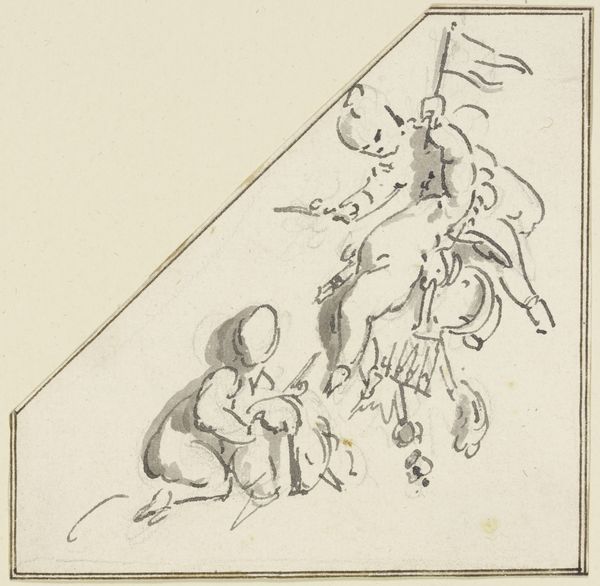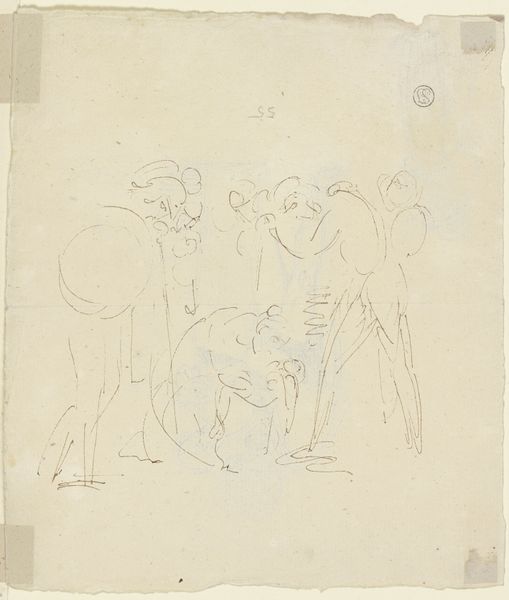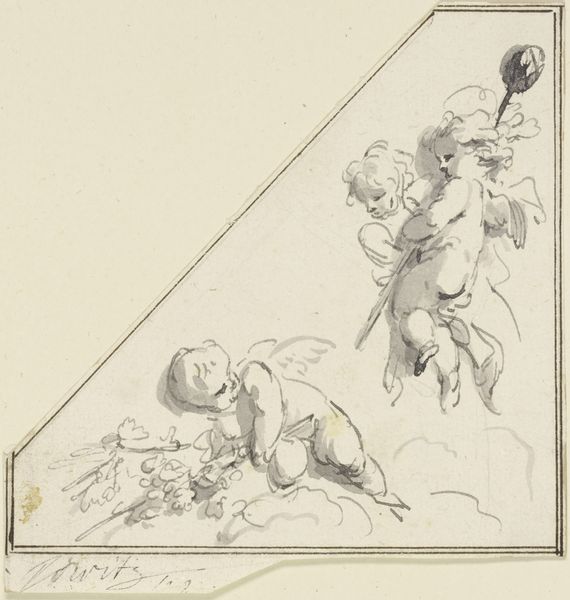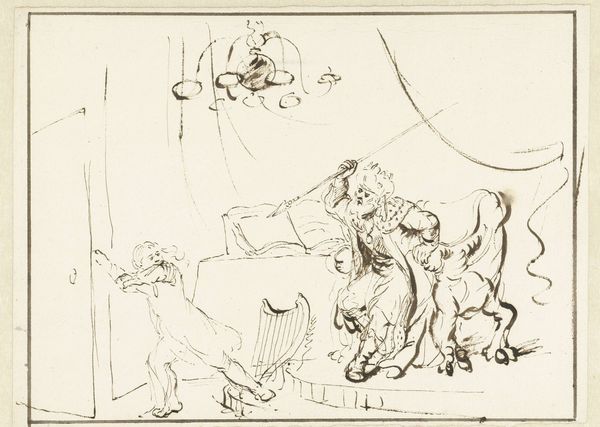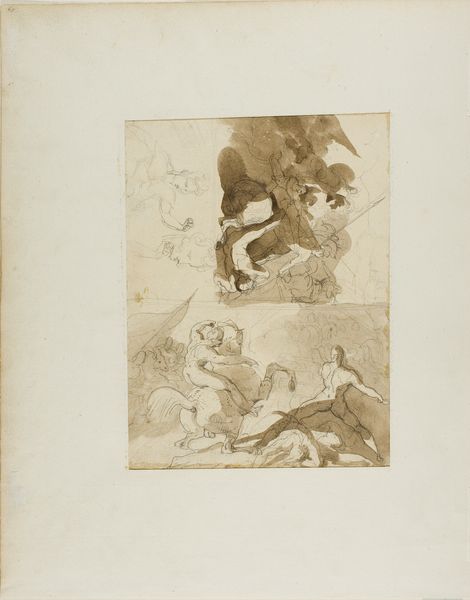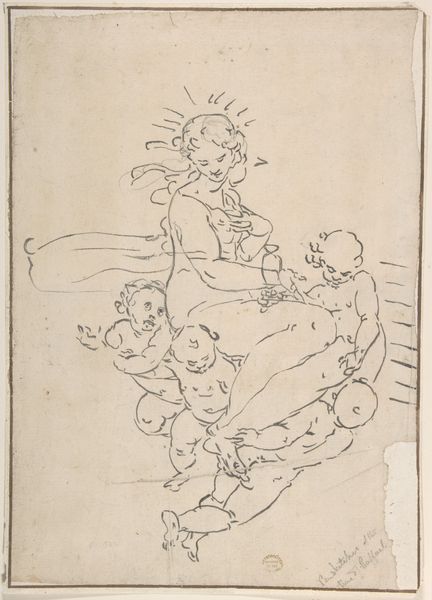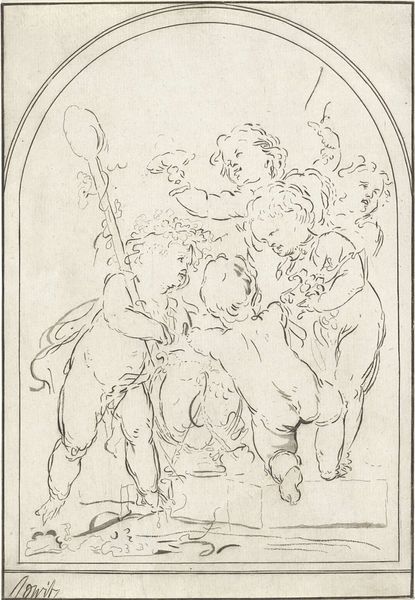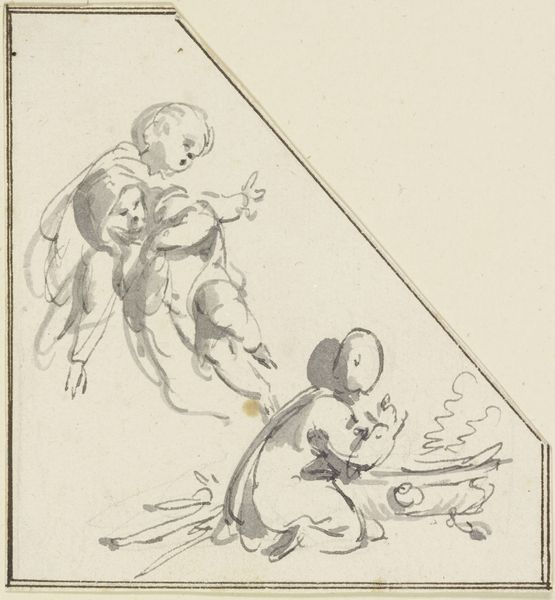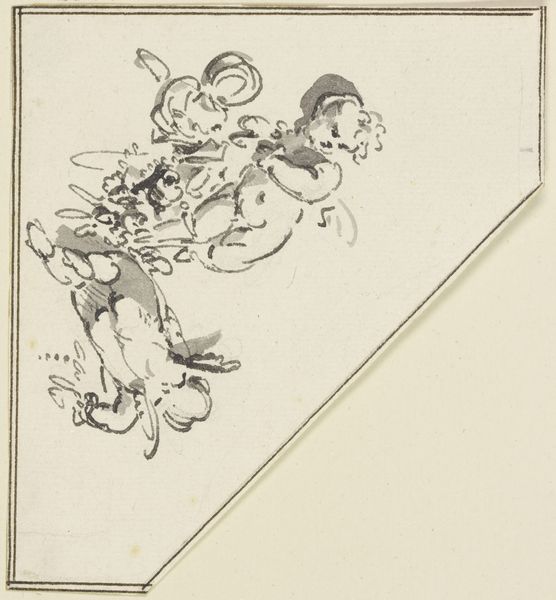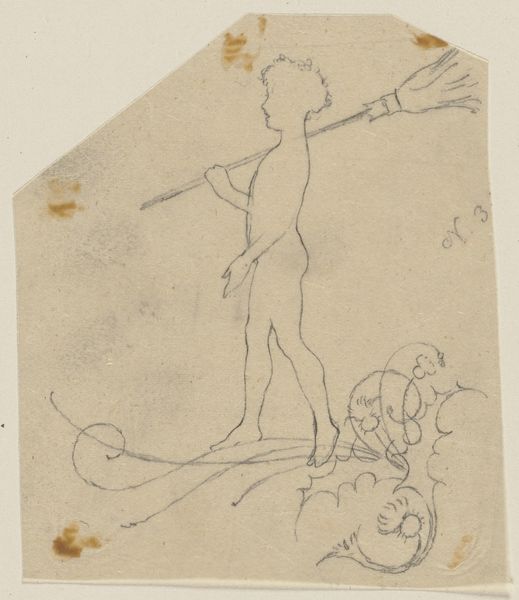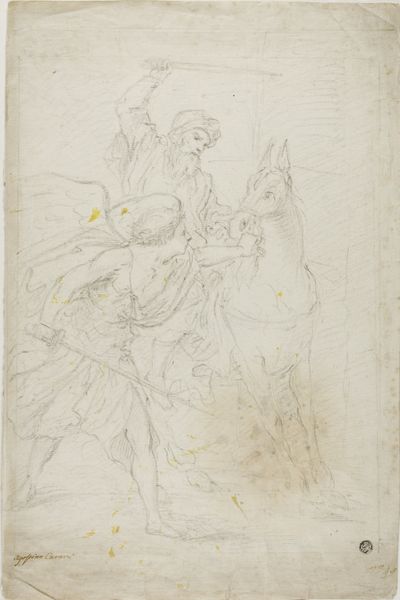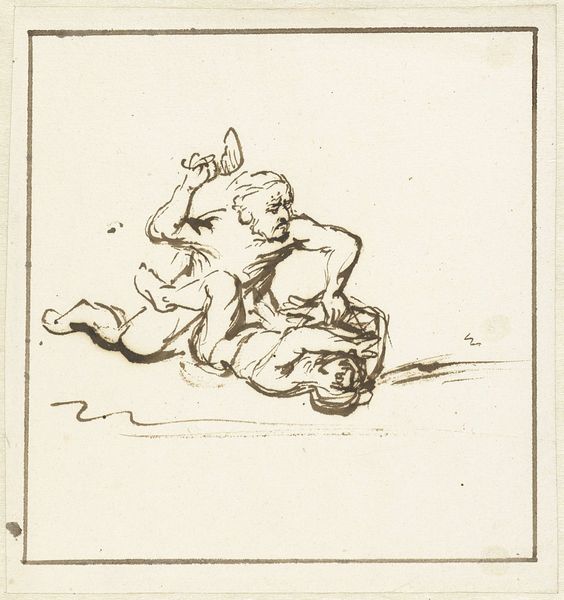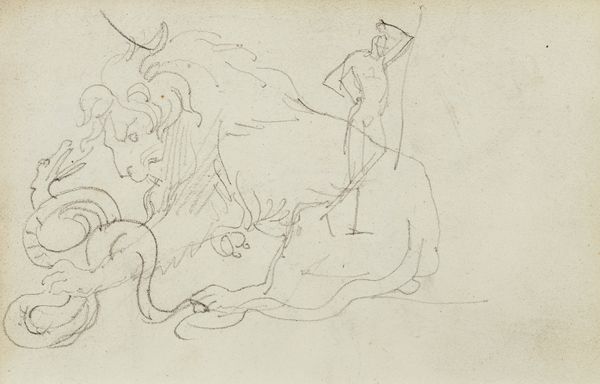
drawing, ink, chalk
#
drawing
#
netherlandish
#
allegory
#
baroque
#
figuration
#
ink
#
sketch
#
chalk
#
15_18th-century
#
miniature
Copyright: Public Domain
Editor: This is "Schwebende Amoretten mit Rauchfass," a chalk and ink drawing by Jacob de Wit, housed in the Städel Museum. It looks like a quick sketch of cherubs with a smoking censer, kind of Baroque-y. What catches your eye when you look at this work? Curator: What grabs me is the potential subversion within this seemingly innocent scene. Think about the Baroque period's fascination with power and spectacle. Here, we have cherubs, symbols often associated with innocence and divine love, but they are also actively involved with a censer, something that would have been closely related to religious authority. Editor: That's interesting, I hadn't thought of that tension. So, the cherubs aren't just cute babies, they’re somehow connected to power? Curator: Exactly. Consider who controlled the imagery of the Baroque era: the Church, the aristocracy. This drawing, even as a sketch, is participating in that visual language. Are these cherubs upholding a particular dogma, or are they being used to legitimize certain ideologies through spectacle and pageantry? Editor: So it's not just religious or spiritual? Are you suggesting there's also a political layer to it? Curator: Precisely. Baroque art was often a tool for political propaganda, carefully constructed to convey messages of authority and divine right. By using these cherubic figures, which are ostensibly innocent, do you think De Wit is trying to comment on the relationship between innocence and power? Editor: I see what you mean! I always thought cherubs were just…cherubs. This makes me reconsider how even seemingly harmless images can reinforce social structures. Curator: Absolutely. And by recognizing these potential layers of meaning, we can start questioning the very narratives these images attempt to construct and legitimize. Editor: Thanks, this was extremely helpful in widening my viewpoint. Curator: My pleasure, it's important that we consider art beyond the superficial.
Comments
No comments
Be the first to comment and join the conversation on the ultimate creative platform.
